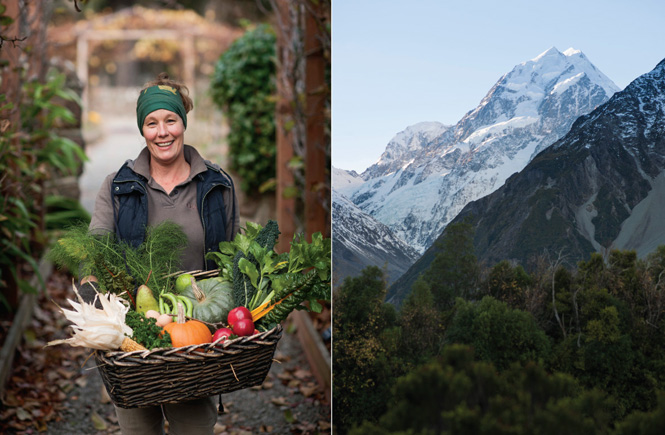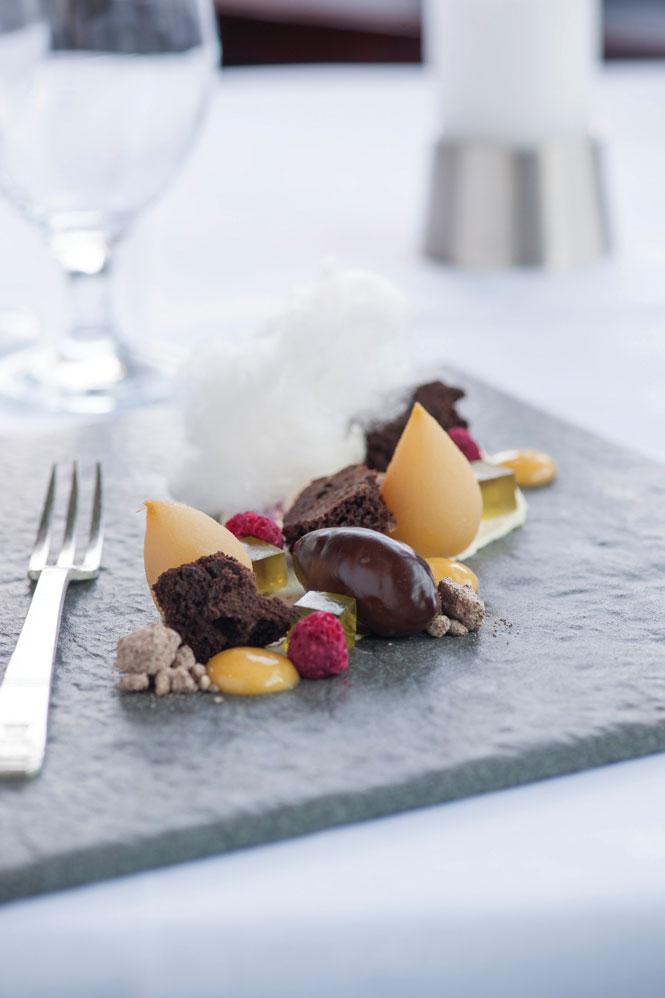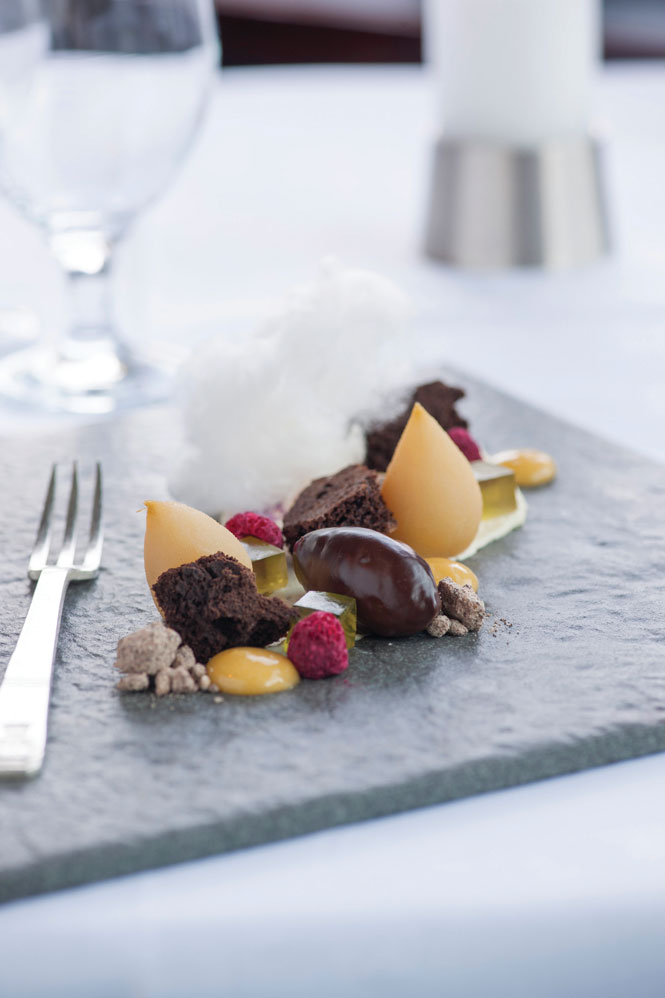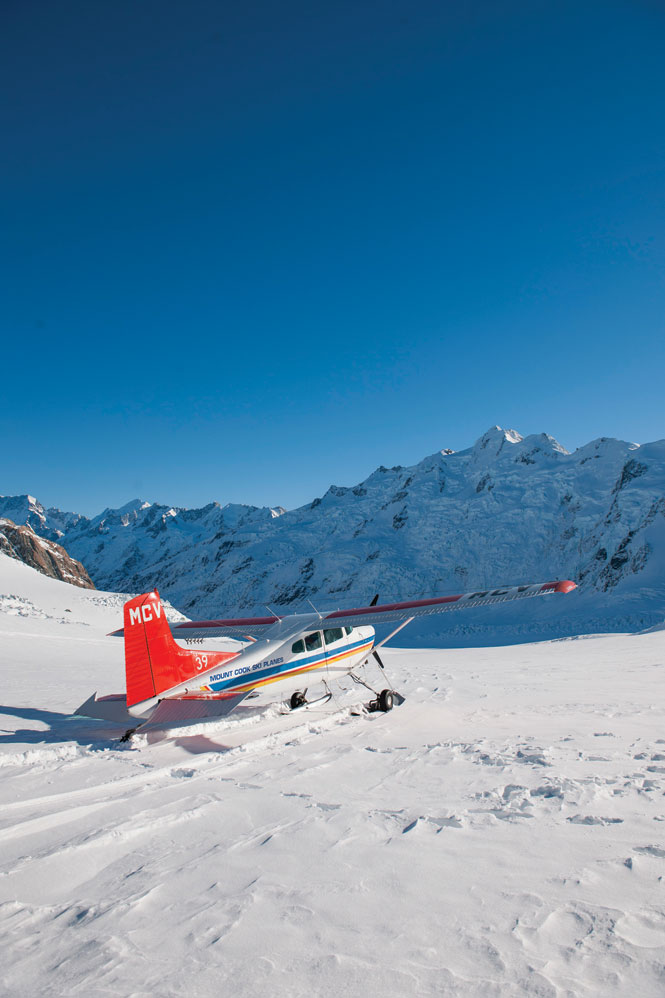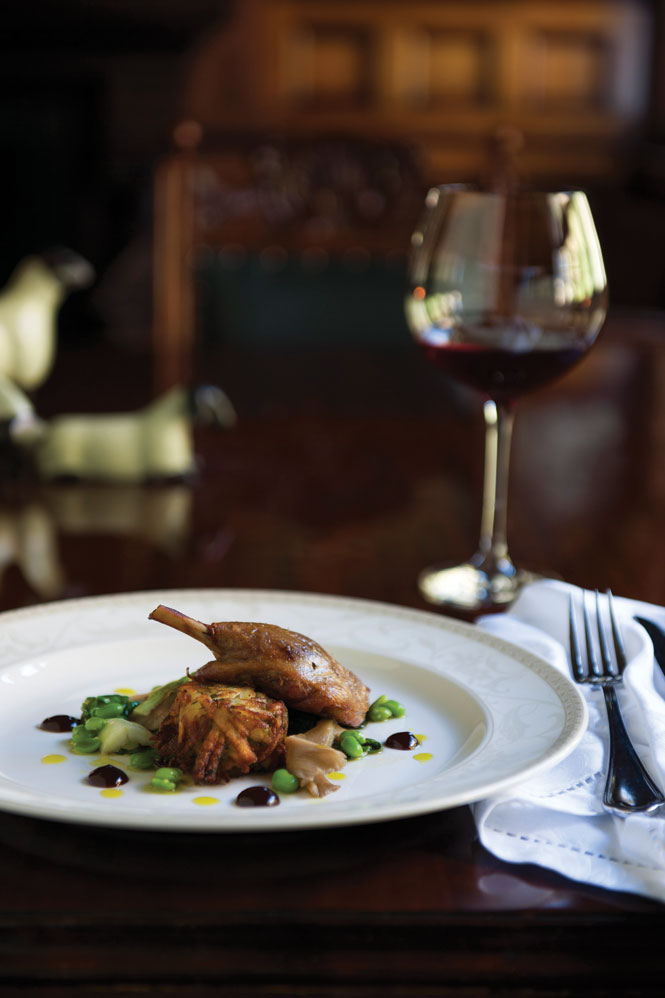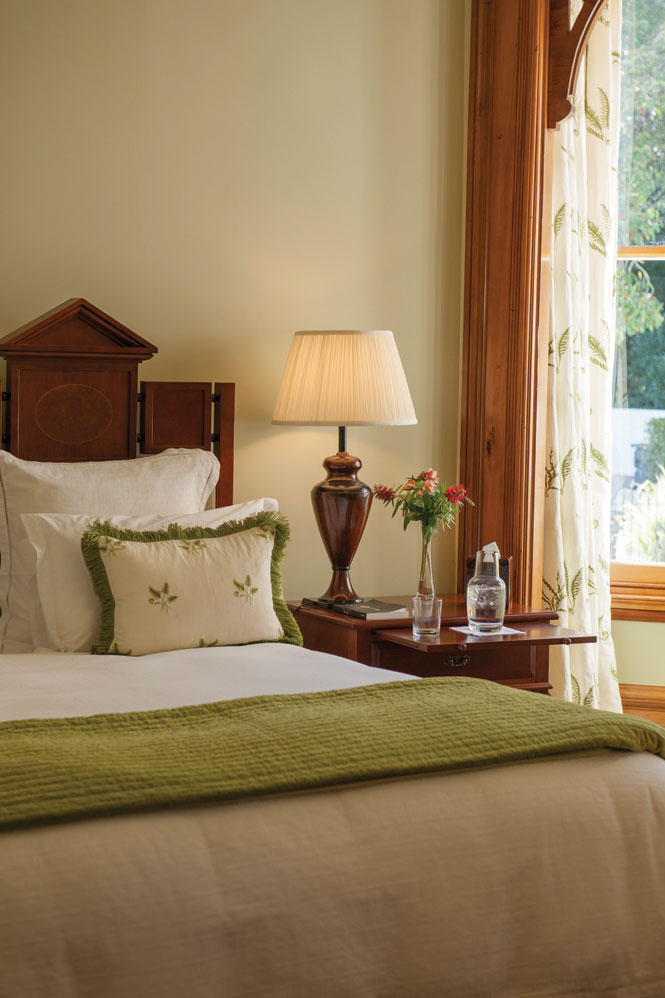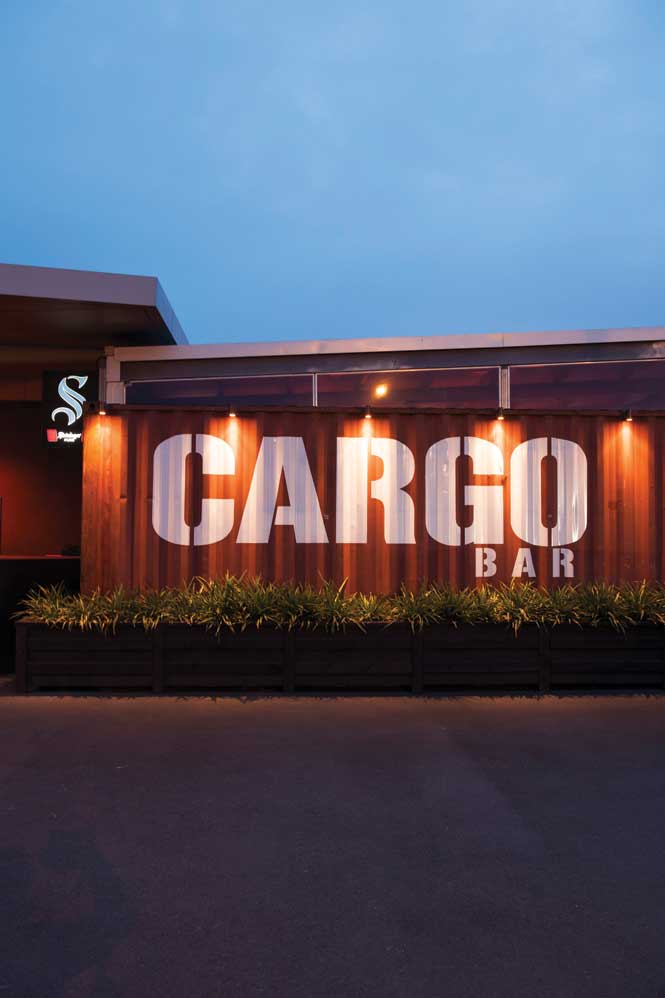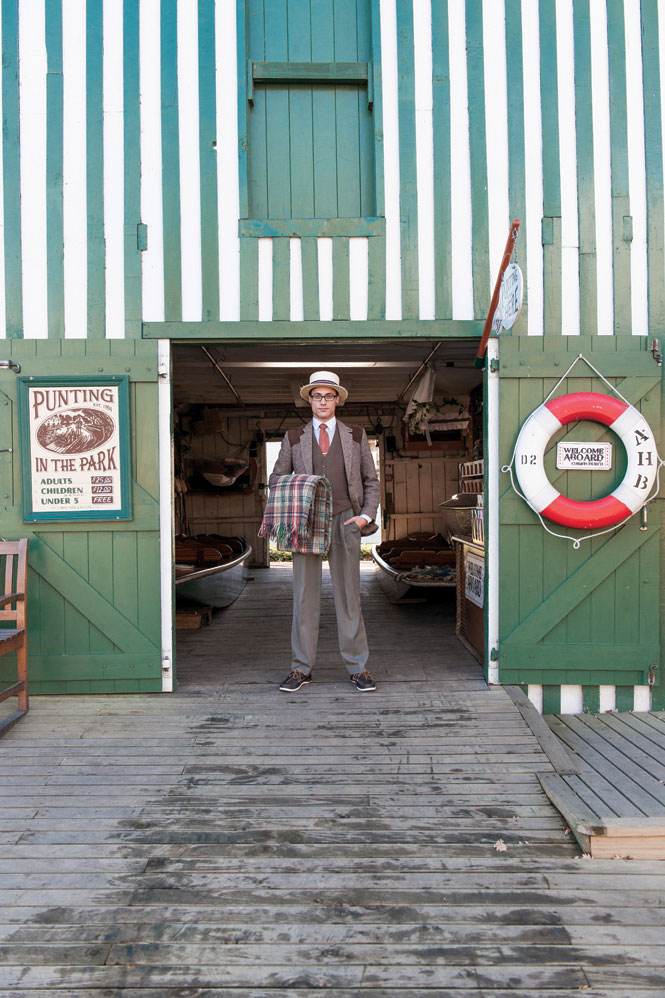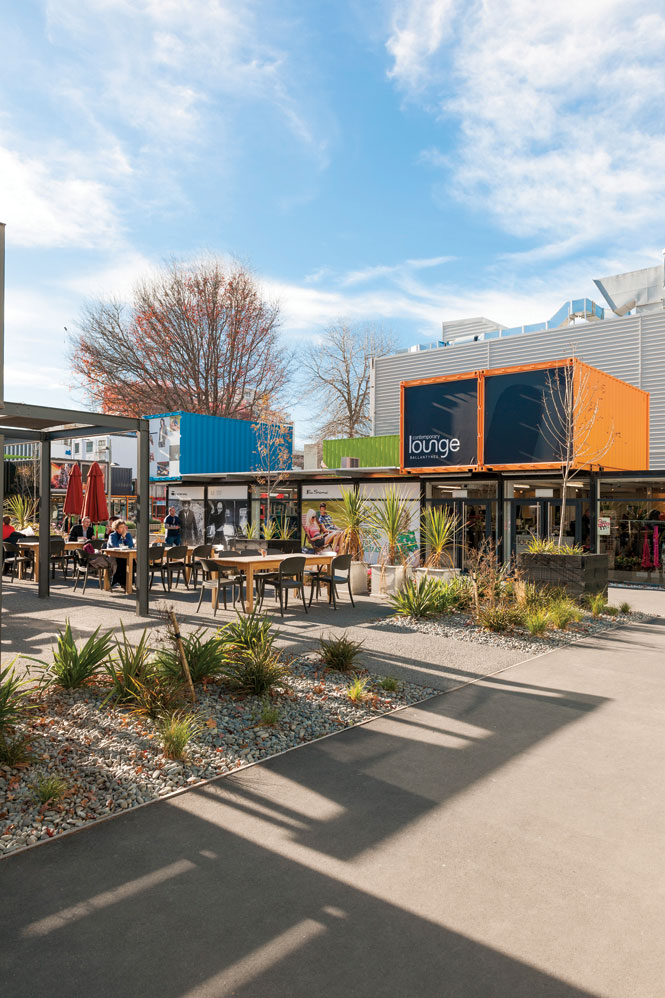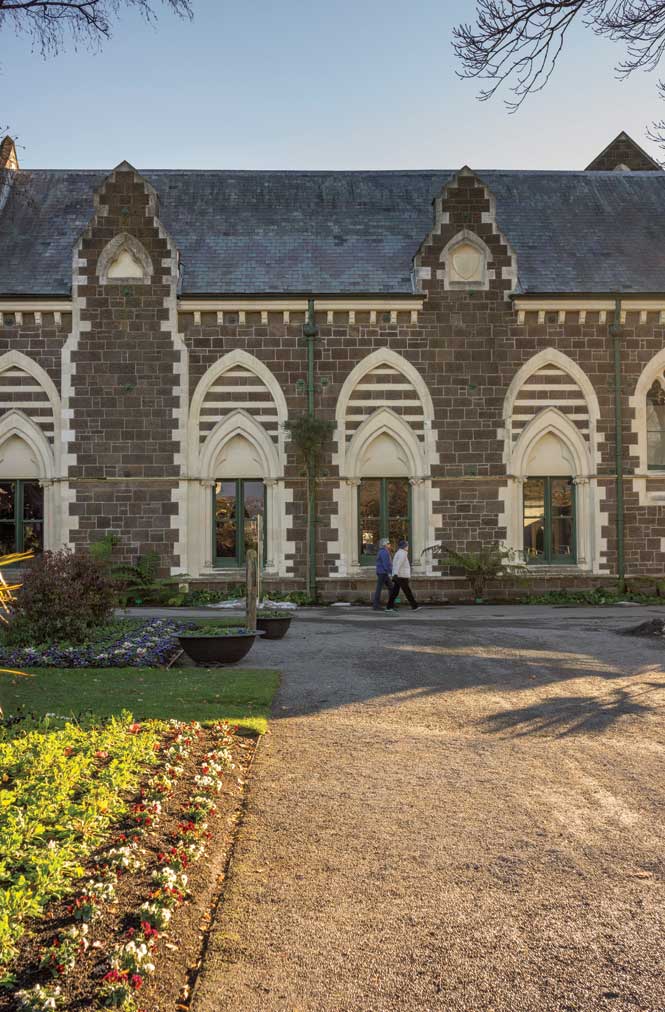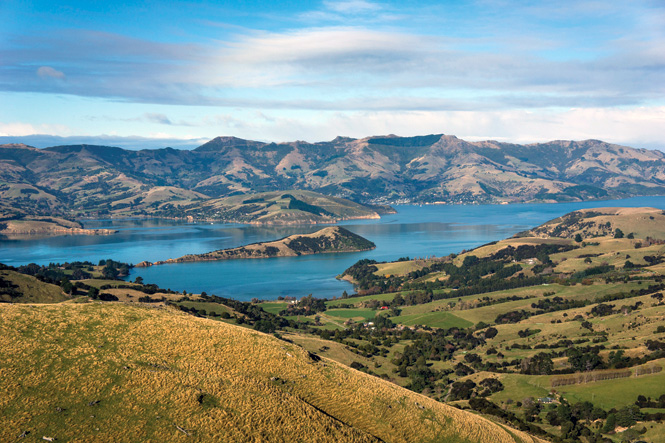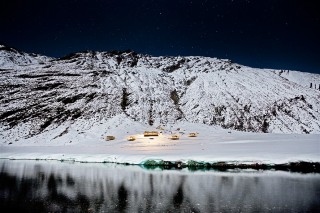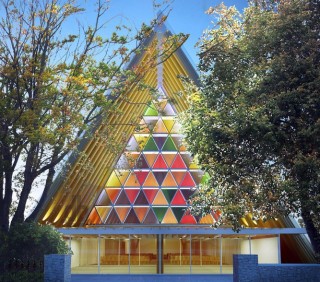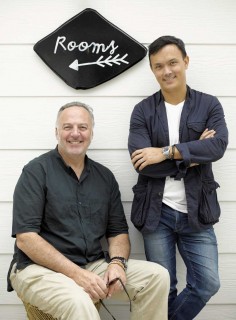Maison de la Mer leaves such pretensions at its doorstep. Overlooking the boat-filled harbor, the house is owned and run by Bruce and Carol Hyland—he originally from Toronto, she from Auckland—and proved the perfect base for exploring the galleries and gift shops of Akaroa, which you can traverse by foot in half an hour. My room was done up in a cozy Provençal style, with a jar of cookies waiting in the attached sunroom. And the Hylands were ideal hosts, discreet or chatty as the occasion required. Over wine in front of their crackling fireplace, they shared stories of their family sailing trips around the world, and pointed me toward Akaroa’s best bet for dinner. That turned out to be a quaint clapboard cottage called the Little Bistro, where I washed down a meal of braised ox cheek with a bottle of Christchurch-brewed Wilgram golden ale.
The next morning, I discovered two things. One, that Carol bakes the most amazing croissants; and two, that a big breakfast with the Hylands is perhaps not the best preamble to a dolphin-watching tour. It gets pretty choppy out there on the water where the sheltering volcanic cliffs of Akaroa Harbour give way to the Pacific. But it was worth it: not only did we spot basking fur seals, roosting cormorants, and a little blue penguin, but also a friendly pod of Hector’s dolphins, an endemic species that ranks among the world’s smallest cetaceans. They struck me as the ultimate Akaroa mascot: cute as a button and easy to love.
THE CANTERBURY REGION IS LARGE—it accounts for a quarter of the South Island—and varied, ranging from the snow-dusted peaks of the Southern Alps to shimmering shores of the Pacific. The road from Akaroa to Mount Cook Village took me though endless kilometers of flat farming country before heading inland and upward through rolling pastureland and finally into the high country of the MacKenzie Basin, a vast, wind-scoured landscape of tussock grasslands. I made a pit stop at Lake Tekapo to admire an old stone church before pushing on to Aoraki Mount Cook National Park, whose eponymous peak (the Maori half of its name means “cloud piercer”) is the tallest in New Zealand.
This, I learned at The Hermitage in Mount Cook Village, was where Sir Edmund Hillary began training for his ascent of Mount Everest; the hotel hosts an education center dedicated to the legendary New Zealander, including a replica of the snow tractor he used for his 1958 South Pole expedition.
The Hermitage is something of a legend, too. Opened in 1884, it was rebuilt on higher ground after being destroyed by a flood, and rebuilt once again when a fire gutted it in the 1950s. The wing where I stayed was just a decade old, but the views were timeless: from my window, I could look straight up the Hooker Valley to the craggy 3,754-meter summit of Aoraki Mount Cook, framed against a crisp blue autumn sky.
Before dinner—bluff oysters and mussels; lamb with feta-stuffed kumara (the local sweet potato)—I had just enough time to make my flight with Mount Cook Ski Planes. Like jet boats and bungee cords, ski planes, which carry retractable skis on their landing gear, are a Kiwi invention. You’ve got to admire their pluck. From an airfield outside the village, I was whisked skyward in a crowded eight-seat turboprop, soaring up through a deep valley along a wall of mountains toward the head of the Tasman Glacier. The scenery was thrilling, and so was our landing, which sent up a spray of ice as the plane skidded to a stop. Then we all got out and stood for photo ops amid the blinding whiteness.
I had one last look at the glacier the next morning. This time it was from the vantage of a tour boat on the Tasman’s terminal lake, a milky green expanse that we hiked to across a landscape of thorny matagari bushes and rocky moraine. On the far side of the water was the ominous-looking rampart of the glacier wall. Our boat kept to the lake’s other end, where a scattering of icebergs glinted and dripped in the slanting sunlight. “You’re lucky,” our guide said. “Ten million tons of ice calved off the glacier two weeks ago—that’s what you’re looking at. If you had come before then, you wouldn’t have seen a single iceberg.”
And the adventure didn’t end there. On my drive back to Lake Tekapo and a night of stargazing, I got stuck in a herd of maybe 1,000 bleating merino sheep, mindlessly crisscrossing the road on their way to some distant pasture. This constitutes a traffic jam in New Zealand. And sure, it’s a cliché. But can there be a more quintessentially Kiwi moment?



